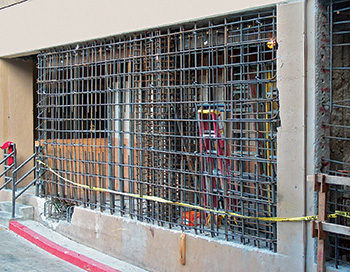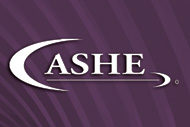 |
|---|
| Photo by Lynn Howlett Photography; courtesy of Cummins Power Generation Generator testing will be affected by changes in the Joint Commission’s definitions of time. |
Standards changes relevant to the Joint Commission's Environment of Care (EC) and Emergency Management (EM) chapters have not been common in recent years.
However, this year will be different. Not all changes will reside in these two chapters, but their impact will.
Health facilities professionals will see changes in areas ranging from electrical systems, hazard communication and leadership to emergency readiness for which they must be prepared.
Changes to EC
The changes to the EC chapter start with the definitions of time, found in the "other issues for consideration" section. They include:
- Every three years or 36 months is defined as three years from the previous event, plus or minus 43 days.
- Quarterly is defined as every three months, plus or minus 10 days.
- Monthly or 30-day intervals is defined as 12 times per year, a calendar reference.
- Weekly is defined as a calendar reference.
The triennial, monthly and weekly references are new definitions. Quarterly was previously a calendar reference. For the triennial and quarterly time frames, the previous event is defined as the month of the previous event, not the exact date.
These time definitions likely will have the most impact for generator and automatic transfer switch (ATS) testing, both referenced in EC.02.05.07, where there have been some additional language changes. Both the generator and the ATS testing are now required "monthly." The limitation of "at least 20 but no more than 40 days apart" has been removed.
The result is that these tests may be performed any time during the calendar month. This gives an organization the leeway to perform a generator test on April 30 and again on May 1 and accomplish two monthly tests; or, possibly, on May 1 and June 30, but neither of these is the intent of the requirement.
Obviously, hospital generators must be functional at all times, and tests at regular intervals can ascertain that this will be the case. The benefit to the hospital is that if the 20- to 40-day window is missed for a day or two on either end, the surveyor won't fault it.
Also, regarding generators and ATSs, there is a new note attached to both requirements that is applicable only to nondiesel generators. It states that these monthly tests need only be conducted with the available load if the generator is not diesel-powered. Wet stacking is not an issue in nondiesel generators and, therefore, the load factor is not important.
Moving on to the subject of hazardous materials and waste, there is only one change in the 2014 standards. It is found in Element of Performance (EP) 11, which changes the term Material Safety Data Sheets to Safety Data Sheets (SDS).
This is in line with the 2012 version of the Occupational Safety & Health Administration (OSHA) Hazard Communication Standard, 29 CFR 1910.1200. Phasing in the new requirements is under way, with all staff members required to have been trained by Dec. 1, 2013. All manufacturers must be shipping with new labels by Dec. 1, 2015, and the new program and all SDS must be in place by June 1, 2016.
Some manufacturers and vendors of electronic programs are making these changes now, but most hospitals will have some documentation in both the old and new formats prior to the June 1 deadline. In the interim, compliance with either the 1994 or 2012 format is acceptable.
This year also brings a new version of an earlier National Patient Safety Goal on clinical alarms that can be found at NPSG.06.01.01. Clinical alarms were addressed in one of the Joint Commission's earliest NPSGs, but it was removed after only a couple of years.
The current NPSG is based on Sentinel Event #50, "Medical Device Alarm Safety in Hospitals," which was published in April 2013. The Sentinel Event Alert document should be considered a resource in compliance with the new NPSG, which will be phased in between 2014 and 2016.
During calendar year 2014, the hospital is required to identify the most important alarms to manage based on medical staff and clinical department input, risk to patients, necessity of specific alarms, potential for patient harm and published best practices and guidelines.
By July 1, 2014, hospital leadership is expected to have identified alarm safety as an organizational priority. Policy development, implementation and education will be required by 2016. Most hospitals are assembling interdisciplinary teams to develop compliance activities. Most often, they comprise representatives from patient safety, clinical engineering, nursing and other areas. These professionals must remember to keep the hospital's EC committee in the loop.
EM changes
Changes related to emergency management are found not only in the EM chapter, but also in the Leadership (LD) chapter. The rationale section of the EM chapter underscores the role of organizational leadership involvement in the resulting performance of the organization during an actual emergency.
These Joint Commission requirements emphasize that leadership role and further elevate the importance of emergency management as an integrated function in the organization. The relevant standards changes will be addressed in what appears to be a logical order and will involve moving back and forth between the EM and LD chapters.
First, LD.04.01.05, EP 12, requires leadership to identify an individual who is accountable for the four phases of emergency management (mitigation, preparedness, response and recovery), the six critical areas (communications, resources and assets, security and safety, staff, utilities and patients), and collaboration across both the organization and the surrounding community.
There is a note indicating that this requirement is exclusive of incident command responsibilities. While there is no requirement to do so, some hospitals are providing an appointment letter for a designated individual, similar to that for the safety officer. Some also indicate the percentage of time the individual devotes to emergency management activities.
In EM.03.01.01, EP 4 specifically states that the annual evaluation of the emergency operations plan, hazard vulnerability analysis and emergency resource inventory be reviewed by senior leadership, defined as: "Those leaders with responsibility for organizationwide strategic planning and budgets (vice presidents and officers). The hospital may include all senior hospital leaders or designate specific leaders."
The standards make clear that leadership and other staff involvement are expected in the evaluation of emergency exercises in EM.03.01.03, EP 13, which requires relevant input from "all levels of staff affected." And, in EP 15, it notes that senior leadership must review all after-action reports in addition to the EC committee, which has been a required reviewer for some time.
Returning to the Leadership chapter, LD.04.04.01, EP 25 involves senior leadership in establishing implementation priorities for corrective actions identified in after-action reports. After-action reports sometimes identify a host of ambitious projects to be tackled, with the potential that time and funding may not be available for all of them.
Looking forward
Looking forward to mid-2014, the Joint Commission has a variety of prepublication standards that will be forthcoming, all of which involve hazardous energy sources to include magnetic resonance imaging (MRI), computed tomography (CT), positron emission tomography and nuclear medicine. These will be effective July 1, 2014, and will be placed in various locations throughout the EC chapter, such as:
- EC.02.01.01, EP 14: Managing MRI patient safety risks;
- EC.02.01.01, EP 16: Means to manage these safety risks;
- EC.02.02.01, EP 17: Review and management of staff dosimetry;
- EC.02.04.01, EP 7: Maintenance of image quality;
- EC.02.04.03, EP 15: Equipment maintenance for image quality;
- EC.02.04.03, EP 17: Annual CT dose measurement by medical physicist (no longer only applicable to California hospitals);
- EC.02.04.03, EP 19, 20, 21, 22: Annual performance evaluation of equipment by medical physicist;
- EC.02.04.03, EP 23: Specific parameters for annual performance evaluation of equipment;
- EC.02.06.05, EP 4: Structural shielding design prior to installation of new or replacement equipment;
- EC.02.06.05, EP 6: Radiation protection survey following equipment installation.
The full text of these prepublication standards may be accessed at www.jointcommission.org/assets/1/6/PREPUB-12-20-2013-DiagImaging_HAP_CAH.pdf.
In addition to the standards changes, the Joint Commission has made minor changes to document review during surveys. All of the documents to be reviewed are the same, but there have been some additions to the preliminary planning session documents that must be ready for the surveyors on their arrival.
These include a fire response plan, an interim life-safety measures policy and fire drill evaluations. These are in addition to the preliminary documents that have been required historically, including:
- Statement of conditions from the previous survey — now excluding the plan for improvement — which will be reviewed prior to the surveyors' arrival;
- EC management plans and annual evaluations;
- EC committee minutes;
- Emergency operations plan and annual evaluation;
- Hazard vulnerability analysis;
- Emergency exercises and after-action reports.
Opportunities for improvement
Given that 12 of the top 20 standards most frequently cited by the Joint Commission relate to the EC and are in the EC, EM and Infection Control (medical equipment-related) chapters, 2014 promises many opportunities for improvement.
Health facilities professionals should review the changes listed here and determine how they can be used to improve their operations.
Susan B. McLaughlin, FASHE, CHFM, CHSP, is managing director of MSL Healthcare Consulting Inc., Barrington, Ill., and a former associate director of standards interpretation at the Joint Commission. She can be reached at smclaughlin@mslhealthcare.com.





